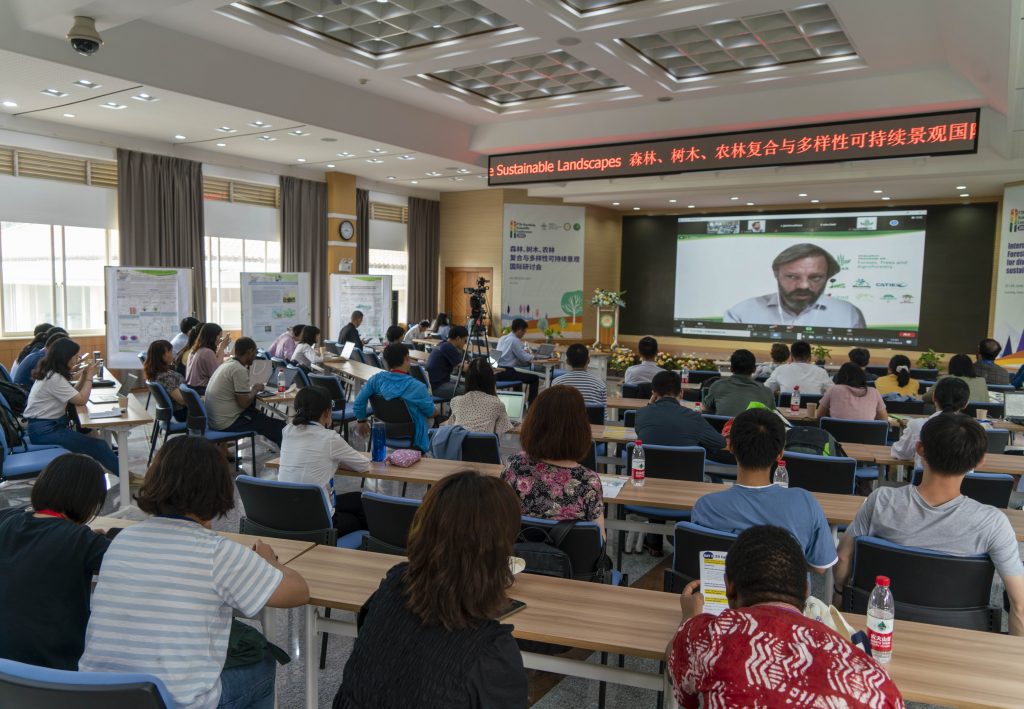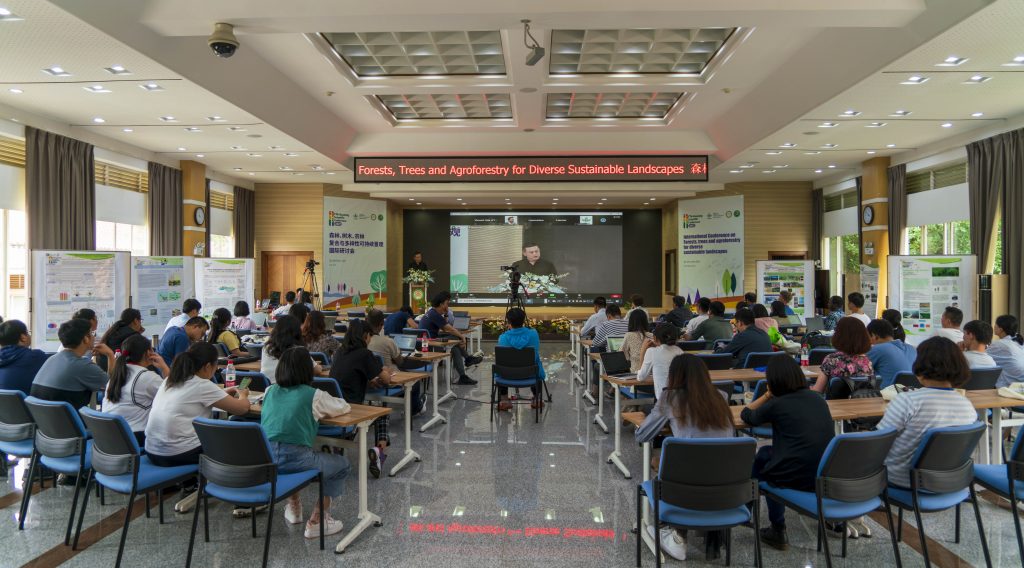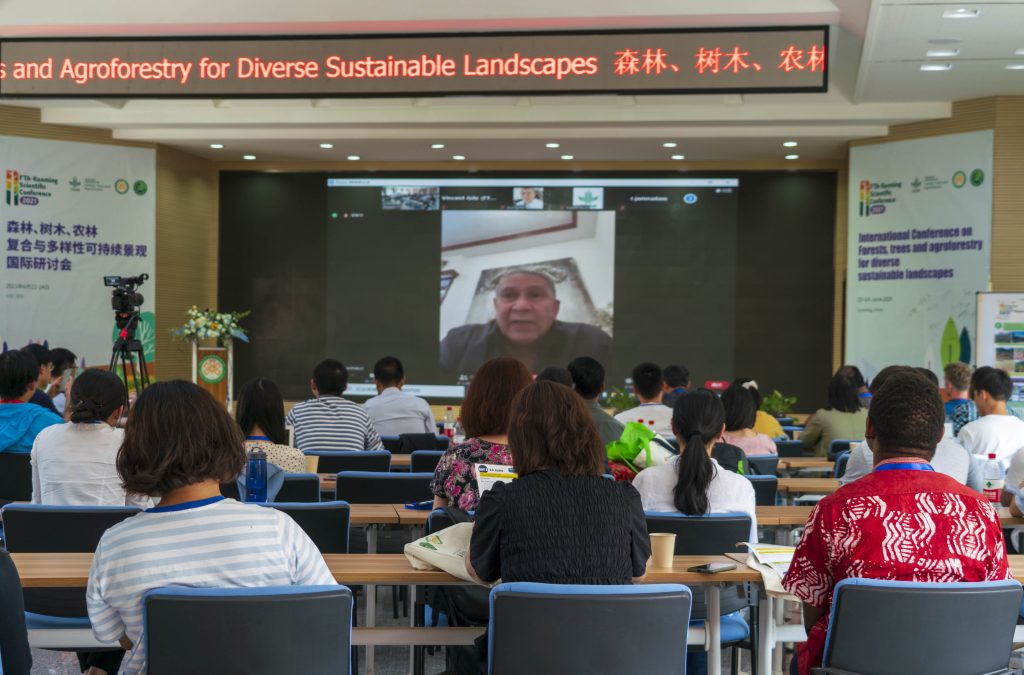On 22–24 June 2021, the CGIAR research program on Forests, Trees and Agroforestry (FTA) organized the FTA Kunming International Conference 2021, which explored the role of forests, trees and agroforestry in enhancing diverse and sustainable landscapes.
All videos from the conference can be accessed here:
“Conserving and managing biodiversity is indispensable to the future of the planet, and conserving and planting trees is a concrete investment for future generations,” said Vincent Gitz, Director of FTA and a facilitator at the conference.

“Forestry and agroforestry exemplify the contributions of biodiversity and agrobiodiversity to sustainable and resilient landscapes, to a green and circular economy, and to sustainable agriculture and food systems for healthy diets.”
Hosted both virtually and in Kunming, China in cooperation with the Kunming Institute of Botany, Chinese Academy of Sciences (CAS) and the Research Institute for Resource Insects, Chinese Academy of Forestry (CAF), the event provided an extensive set of recommendations for the post-2020 global biodiversity framework, as well as the upcoming 15th Conference of Parties to the U.N. Convention on Biological Diversity (CBD COP 15), which will also be held in Kunming in October 2021.

Featuring a diverse lineup of speakers including scientists, practitioners, policymakers and members of civil society, the conference covered six main themes: trees for agroecology and circular agriculture, tree diversity, trees in the framework of the CBD, mountain ecosystems and food security, assessing benefits of landscape restoration, and trees for a circular green economy.
“Plants are the green wedge between plenty and poverty, between enlightenment and stagnation,” said Razan Al Mubarak, Managing Director of the Mohamed bin Zayed Species Conservation Fund. “They provide the building material, the charcoal, the forage, the food and the medicine – and as such, their conservation, restoration and rehabilitation is existential to our survival.”
Climate change, environmental degradation and resource depletion have triggered the collapse of advanced civilizations in the past – and ours could be next unless we urgently change our trajectory, warned CIFOR Director General Robert Nasi.
“The average lifespan of a civilization is about 340 years,” said Nasi, “and if we consider that our current civilization started during the Industrial Revolution, we are probably not far from our expiry date unless we do something.”
Across more than 100 scientific sessions and poster presentations, speakers proposed a series of headline recommendations to conserve the world’s plants and forests and harness their benefits:
- Protect forests and acknowledge their contributions to biodiversity conservation, climate action and sustainable food systems
- Support forest and landscape restoration
- Promote the transition to agroecology
- Recognize and promote the benefits of biodiversity
- Leverage the full potential of trees on farms
- Mainstream orphan crops into cultivation
- Support innovations in knowledge, technology and institutions for resilient mountains
- Mainstream biodiversity in climate discussions and policy
- Promote the production and consumption of fruits, nuts, vegetables and mushrooms, and leverage the potential of insects as a resource
- Understand, recognize, support and draw lessons from Indigenous and traditional culture and food systems
- Harness the potential of forests, trees and agroforestry in the transition to a circular bioeconomy
- Promote instruments that facilitate the joint consideration of landscapes and value chains
Speakers emphasized the critical need to forge strong partnerships across sectors and disciplines to address the multifaceted ecological crisis. “What we really need are bridge-builders,” said Ranjit Barthakur, founder of the Balipara Foundation in India.

“We need people in the funding world who understand enough about technology – and who understand enough about conservation to get two groups to work together.”
A prime example is ecolabelling, according to ICRAF Director General Tony Simons.
“Likely within two years’ time, many food manufacturers will be putting labels with CO2 data on their food packets,” Simons predicted, “and all of the datasets, methods, approaches, protocols and standards that scientists and development partners are working on will enable them to report that in a meaningful way.”
“Countries, companies, civil society groups and even individuals need a lot of guidance when it comes specifically to biodiversity and the way that we manage land use and resources and connect them to our prosperous societies and habitats.”
Barthakur also pointed to the important role of technology in facilitating conservation, from genomics and remote sensing to satellite navigation and artificial intelligence, though he warned that humans must continue to take the lead.
“Technology can help us tremendously by focusing on what we save and how well we’re doing,” he said, “but it can never take the place of the courageous action of all of us to try and save humanity. Politicians and businesses have to finally wake up to the biodiversity challenge.”
By Ming Chun Tang. This article was produced by the CGIAR Research Program on Forests, Trees and Agroforestry (FTA). FTA is the world’s largest research for development program to enhance the role of forests, trees and agroforestry in sustainable development and food security and to address climate change. CIFOR leads FTA in partnership with ICRAF, The Alliance of Bioversity and CIAT, CATIE, CIRAD, INBAR and TBI. FTA’s work is supported by the CGIAR Trust Fund.











